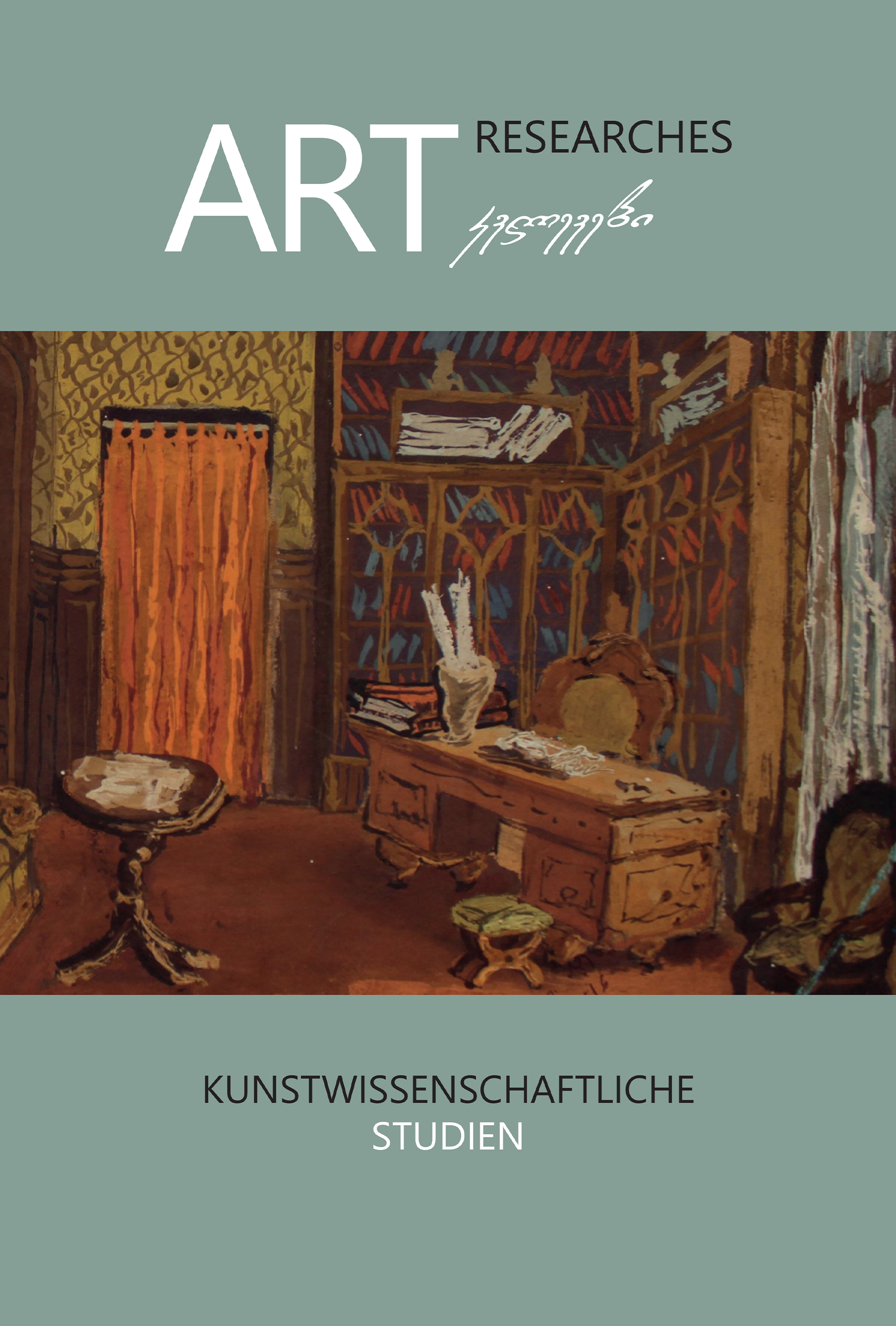IMAGE AND PICTORIALITY
Main Article Content
Abstract
This article deals with the characteristics and peculiarities of the means of film expression - as well as the significance of other art genres in the process of the formation of film art.
The article begins with the well-known questions in film aesthetics, which were considered universally valid at the earlier stage of the emergence of film art - Is film an art? Is it possible to name film and cinematography alongside such artistic genres as theatre, music, visual arts and literature? How does film differ from them? What is its peculiarity, its peculiarity of interpreting, showing and depicting reality in a way that is characteristic only of film? Does film have any independence at all? Perhaps it only creates secondary illustration and makes use of other artistic genres - the language and imagery of literature, theatre, choreography, music, painting, perhaps it imitates them? This question was fair, because the young art could not immediately realize its place among the already existing art genres. The art of film emerged as a unique technical achievement, as a new possibility and ability without a specific objective, without its own experience.
In the next stage of its development in the search for independence, the art of film was particularly subject to the influence of an artistic genre whose creative processing and mastery lent it a new, different quality and depth. From the very beginning, film imitated theatre art in a striking and clumsy way. It attempted to transfer the expressive means and language of the ancient art of acting to the screen - well-known dramas, including Shakespeare, were filmed, but as silent films, and with the meagre means available to film at the time. The fable could only be depicted on the screen in rough outlines and by way of suggestion. This practice proved to be successful, and the nascent art of film thus gained a fruitful experience. Notwithstanding the conspicuous naivety and simplicity, there were ardent supporters and protectors of the art of film. Ricciotto Canudo, one of the first film theorists, saw the perspective of film precisely in its “borrowed” unique meaning, in the synthesis of seven artistic genres. In addition to the special appreciation of “synthesis”, Canudo also emphasized the concrete uniqueness of film imagery: “moving images”, plastic art that develops according to the laws of rhythmic art.
Based on the visual nature of film, the film image became the focus of attention of filmmakers - the world depicted by the painter or artist - film as a visual world fits into the familiar order of aesthetics, the compositional structure, the laws of perspective, the coloristic conception, sharpness, choice of view, and everything that creates the impression of depth and the illusion of reality on the flat screen. The depiction of the visual arts in the film speaks of the important role of the artist, pointing to the artistic contribution made to the film, which enhanced the expressive quality of the cinematic art. It is clear that film is not a fine art and that film is not created by the inspiration of the painter, but by the creative
inspiration of other authors - the playwright and director - according to their predetermined conditions.
In relation to film, photography - one of the immediate predecessors of cinematic art - uses the same principle as the visual arts. Photography has far more in common with film art than any other art genre. However, the most important difference remains the same and is further emphasised by the frame of the paused moment. The uniqueness of film art, however, lies in its changeability: in the aesthetics and significance of the transition from image to image, from sound to sound, from expression to expression, from word to word, from emotion to emotion, from movement to movement ... Music, choreography, photography, the actor, the subject - everything is in motion. Just like in reality. The photographic image cannot simply be compared to a film image, it is a completely different image - with a different expression and content: as already mentioned, the essence of photography is the existence of a single moment, perfect in itself, even if the image expresses infinity and is thus captured for eternity. In contrast, the film image represents movement, in all its diversity and changeability. For the film image, a picture can become an inconspicuous temporary fragment, but it can also be interpreted as a symbol.
The world does not exist as a static, frozen entity with an immobile content. Accordingly, our eyes are better able to perceive movement than immobility. The eyes recognise objects from the background, they see changes, differences and connections between objects, changes in time, spatial changes. The result of many attempts is the following - the film should learn to speak its own visual language and transform the image into a cinematic pictoriality.
The article examines some examples of the search for cinematic pictoriality: by Mikhail Kalatosishvili, Tengiz Abuladze, Jos Stelling, George Smith, James A. Williamson, Joan Miró and others.
